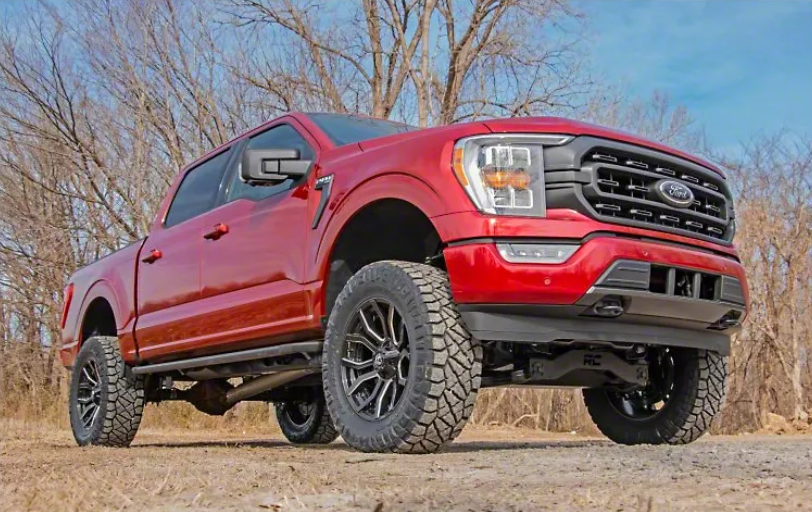
Wheel Backspacing and Wheel Offset Explained

Installing new rims is an easy way to make your vehicle stand out from the rest. But, the purchasing process can sometimes be a bit daunting. Two of the most commonly unknown aspects when buying a brand-new set of wheels are the tire offset and backspace measurements. And, as luck would always have it, they’re the two most important measurements when selecting wheels that will actually fit your ride.
What is Wheel Offset?
Wheel Offset is the distance from the center of a wheel to its mounting face (see image for reference to demonstrate what wheel offset is).
- With a higher offset, your wheels mount farther inward, providing greater clearance between the outside edge of the tire and fender, but less clearance between the inside edge of the tire and your vehicle’s suspension
- With a lower offset, your wheels mount farther outward, providing a wider vehicle stance. For example, a lifted truck with oversized tires often requires 25mm-50mm (approx. 1-2”) less offset than stock, so the wheel and tire are farther toward the outside. This provides more clearance from the suspension. Some lifted trucks even require a zero or negative offset rim in order to clear large tires
- It’s important to check with your installer before purchasing to ensure that the wheels you order provide the proper offset to give you the look and clearance you need
- There are many online resources that will calculate your offset or provide wheel offset charts
What is Wheel Backspacing?
Wheel backspace is the distance from the inside edge of a wheel to the mounting face. A wheel’s backspace is equal to ½ the wheel’s width + offset (in inches) + ½” (see image for a reference to demonstrate what wheel backspacing is).
- More backspace indicates that the wheel protrudes further into the wheel well and closer to the suspension parts — which increases the risk of rubbing
- Less backspace indicates that the wheel protrudes less into the wheel well and therefore reduces the risk of rubbing
- Lifted trucks and SUVs often have a maximum allowable backspace pre-specified by the lift kit manufacturer. With too much backspace, your wheel or tire won’t fit your lifted truck or SUV
- Few trucks accept more than 5” backspace. Less than 5” backspace is more common on lifted trucks, but confirm with your lift kit manufacturer to be sure
- Check with your installer prior to purchasing your wheels to ensure you are ordering the proper backspace for the look and clearance you need
Backspacing vs Offset explained
Often backspacing and wheel offset can be confused for the same thing, but in fact, they are very different. The difference can be explained quite simply: the wheel offset is the distance between the mounting surface and the center of the wheel, whereas the wheel backspacing is the remaining distance from the mounting surface to the back of the wheel, so to calculate the backspacing you just add the rim offset and half the wheel width.
Now that the difference of backspacing vs. offset has been cleared up, understanding wheel specifications should be much easier when it’s time to select your new offset rims.
But how do I know how much offset I need?
Staring at those wheel offset charts in a Tire shop can spike your blood pressure if you don’t know what you’re looking at, so how do you find out what is your wheel backspacing and your offset? Your vehicle will come with specifications for the stock dimensions that will suit it best – this can usually be found in your owner’s manual or you can contact your local dealership to find out. The trouble is, if you make any modifications to your suspension, body spacing or even your brakes, your tire offset needs will change.
If you’ve made modifications that you think may affect the offset and backspacing of your vehicle, some test fitting may be required. Fit the wheel to your car and loosely tighten the lug nuts, checking that there is clearance right around the tire. The general rule of clearance is that there is at least an inch minimum between the entire wheel and any surface, this allows for any tire flex or wheel travel you may have while driving.
If you’re still unsure and wondering what is the offset on your wheels, a tire shop can make short work of measuring it for you, they can help you work out the offset and backspacing so you know exactly which rims to buy. Once you’ve got all the specifications sorted, you can search for your specific wheels online at AT, filtering out the correct size so you can get the perfect offset wheels for your car, SUV or truck.